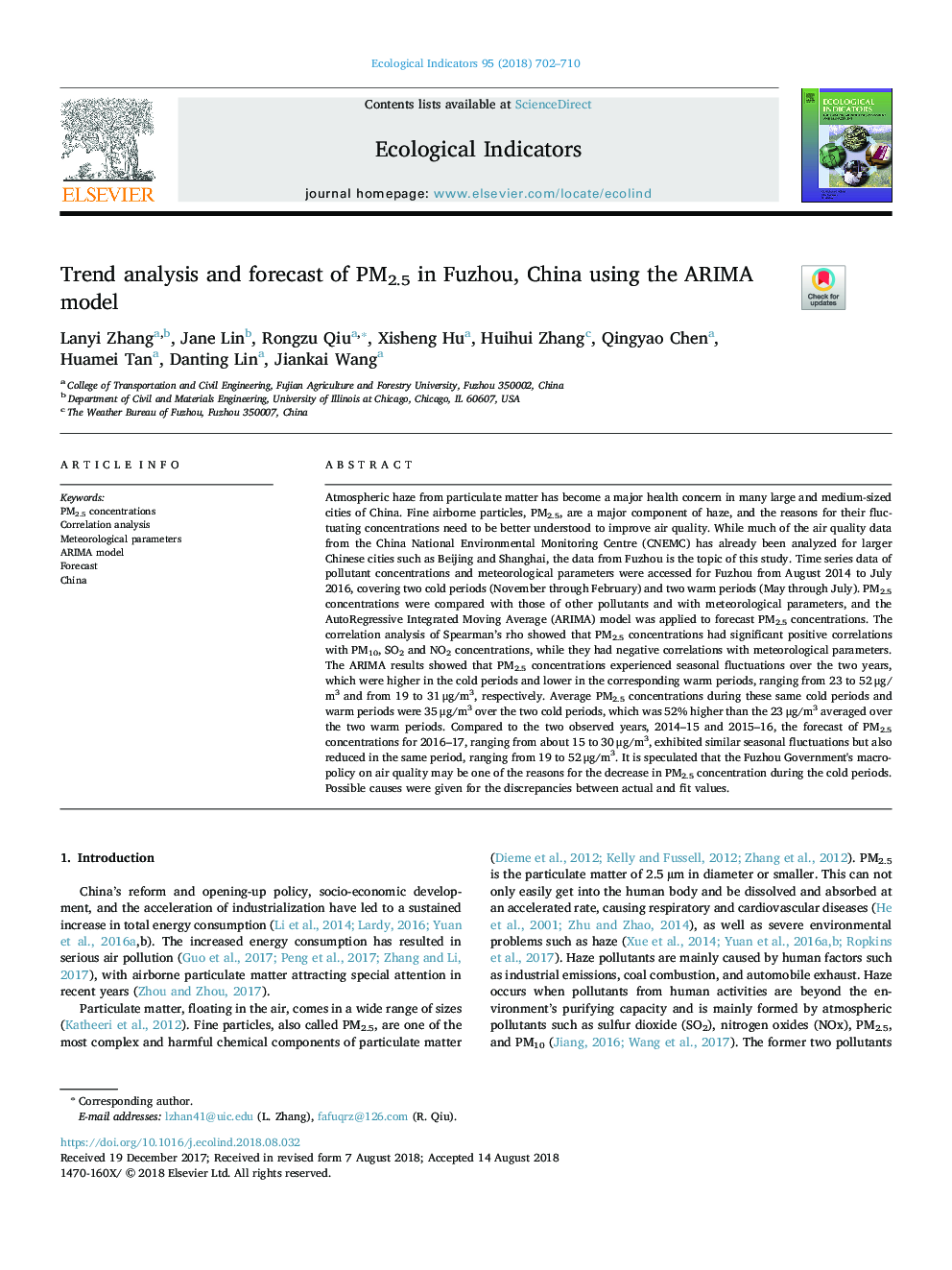| کد مقاله | کد نشریه | سال انتشار | مقاله انگلیسی | نسخه تمام متن |
|---|---|---|---|---|
| 8845027 | 1617107 | 2018 | 9 صفحه PDF | دانلود رایگان |
عنوان انگلیسی مقاله ISI
Trend analysis and forecast of PM2.5 in Fuzhou, China using the ARIMA model
دانلود مقاله + سفارش ترجمه
دانلود مقاله ISI انگلیسی
رایگان برای ایرانیان
کلمات کلیدی
موضوعات مرتبط
علوم زیستی و بیوفناوری
علوم کشاورزی و بیولوژیک
بوم شناسی، تکامل، رفتار و سامانه شناسی
پیش نمایش صفحه اول مقاله

چکیده انگلیسی
Atmospheric haze from particulate matter has become a major health concern in many large and medium-sized cities of China. Fine airborne particles, PM2.5, are a major component of haze, and the reasons for their fluctuating concentrations need to be better understood to improve air quality. While much of the air quality data from the China National Environmental Monitoring Centre (CNEMC) has already been analyzed for larger Chinese cities such as Beijing and Shanghai, the data from Fuzhou is the topic of this study. Time series data of pollutant concentrations and meteorological parameters were accessed for Fuzhou from August 2014 to July 2016, covering two cold periods (November through February) and two warm periods (May through July). PM2.5 concentrations were compared with those of other pollutants and with meteorological parameters, and the AutoRegressive Integrated Moving Average (ARIMA) model was applied to forecast PM2.5 concentrations. The correlation analysis of Spearman's rho showed that PM2.5 concentrations had significant positive correlations with PM10, SO2 and NO2 concentrations, while they had negative correlations with meteorological parameters. The ARIMA results showed that PM2.5 concentrations experienced seasonal fluctuations over the two years, which were higher in the cold periods and lower in the corresponding warm periods, ranging from 23 to 52â¯Î¼g/m3 and from 19 to 31â¯Î¼g/m3, respectively. Average PM2.5 concentrations during these same cold periods and warm periods were 35â¯Î¼g/m3 over the two cold periods, which was 52% higher than the 23â¯Î¼g/m3 averaged over the two warm periods. Compared to the two observed years, 2014-15 and 2015-16, the forecast of PM2.5 concentrations for 2016-17, ranging from about 15 to 30â¯Î¼g/m3, exhibited similar seasonal fluctuations but also reduced in the same period, ranging from 19 to 52â¯Î¼g/m3. It is speculated that the Fuzhou Government's macro-policy on air quality may be one of the reasons for the decrease in PM2.5 concentration during the cold periods. Possible causes were given for the discrepancies between actual and fit values.
ناشر
Database: Elsevier - ScienceDirect (ساینس دایرکت)
Journal: Ecological Indicators - Volume 95, Part 1, December 2018, Pages 702-710
Journal: Ecological Indicators - Volume 95, Part 1, December 2018, Pages 702-710
نویسندگان
Lanyi Zhang, Jane Lin, Rongzu Qiu, Xisheng Hu, Huihui Zhang, Qingyao Chen, Huamei Tan, Danting Lin, Jiankai Wang,